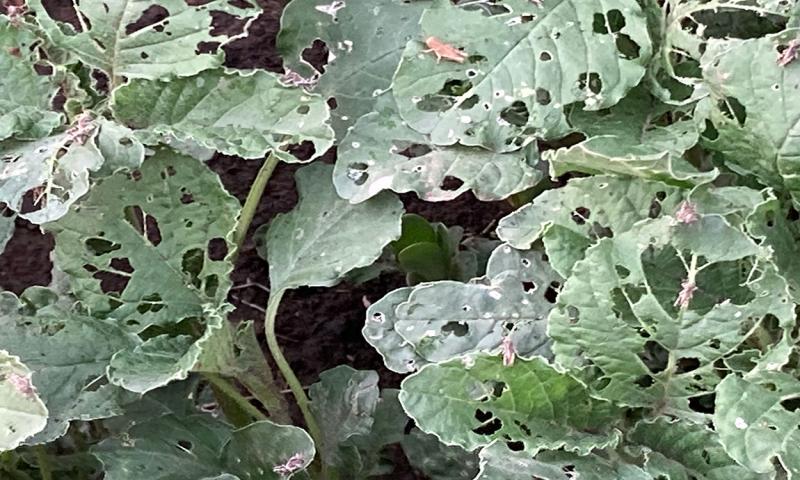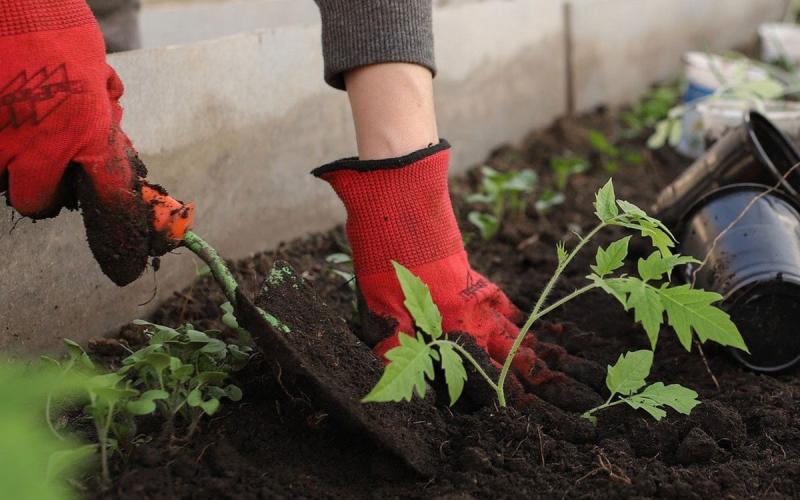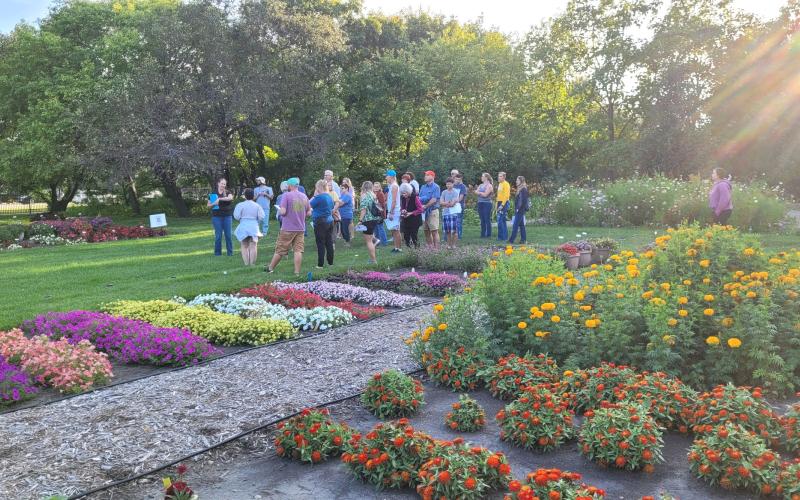
Originally Submitted June 16, 2023
Written collaboratively by Adam Varenhorst, Amanda Bachmann, Philip Rozeboom, Patrick Wagner, and Brad McManus.
We have received numerous calls regarding large grasshopper populations causing extensive defoliation in gardens and around homes in South Dakota and Iowa (Figure 1). Typically, grasshoppers are more of an issue later in the summer, but the combination of dry conditions and large 2022 populations are responsible for the increased grasshopper activity in gardens during 2023 (Figure 1).
Insecticide Options
If large grasshopper populations are observed in gardens, the use of a foliar insecticide may be warranted to protect plants that are being actively defoliated by grasshoppers. If large grasshopper populations are observed in grassy areas or lawns around gardens, insecticide-treated bait may be used to reduce the grasshopper populations. From our search, there are no stocks of Nosema locustae treated bait available.
Keep in mind, that many foliar insecticides labeled for grasshoppers are broad spectrum and can impact non-target insects, like bees and other pollinators. When determining if an insecticide application is necessary, consider what plants are flowering and what parts of what plants are being harvested for consumption. Note the pre-harvest intervals on insecticides, especially for leafy crops, like kale and lettuce. It’s also important to remember that treating grasshoppers when they are still nymphs will result in more-successful population reductions. Adult grasshoppers are harder to manage with insecticides.
Management Thresholds
The threshold for grasshopper nymphs that is used for crops and rangeland also can also be applied to yards and gardens. For grasshoppers, the threshold is 15 to 20 nymphs per square yard and 8 to 10 adults per square yard. To determine how many grasshoppers are present, we recommend standing in the infested area and then count the grasshoppers as they are moving in an area that is approximately one square yard. Many of the reports we have been receiving are for populations that greatly exceed the thresholds.
Other Considerations
To greatly reduce grasshopper populations in yards, the margins of the yard should also be treated. This would include road ditches and areas with tall grass or weeds. It is unlikely that a single treatment of an infested garden will result in the complete removal of the grasshopper populations, and continued monitoring and treatments will likely be necessary. In all cases, make sure to read the labels and follow all label recommendations for application, number and timing of applications, and the use of personal protective equipment.


